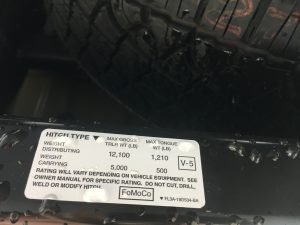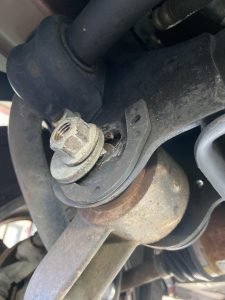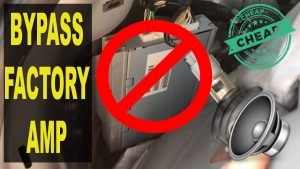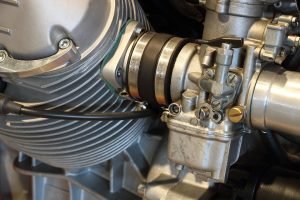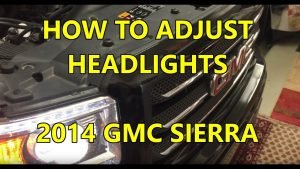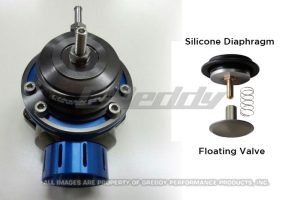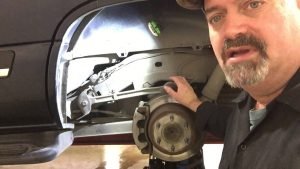
Contents
How to Check Your Brake Pads: A Step-by-Step Guide
Keeping your brakes in top condition is crucial for safety. Knowing how to check your brake pads yourself can save you money and help you catch potential problems early. This guide provides a clear, step-by-step process to inspect your brake pads and identify when they need replacing.
🛒 Recommended Product
Why Check Your Brake Pads?
Worn brake pads lead to reduced braking power, longer stopping distances, and potentially dangerous driving situations. Regular inspections ensure your safety and prevent costly repairs down the line. Aim to check your brake pads every 6 months or 5,000-7,500 miles, depending on your driving habits.
What You’ll Need:
- A flashlight or inspection lamp
- Gloves (optional, but recommended to keep your hands clean)
- Wheel chocks (essential for safety)
Step-by-Step Guide to Checking Your Brake Pads:
-
Safety First! Park your car on a level surface, engage the parking brake firmly, and use wheel chocks behind the wheels opposite the ones you’re inspecting. This is crucial to prevent the car from rolling.
-
Locate the Wheels: Identify the wheels you want to inspect. You’ll need to check all four wheels.
-
Raise the Vehicle: Use a jack to safely lift the vehicle. Consult your owner’s manual for the correct jacking points. Always use jack stands for added safety once the vehicle is lifted; never work under a vehicle supported only by a jack.
-
Remove the Wheel: Once the vehicle is securely supported, remove the wheel. You’ll need a lug wrench to loosen the lug nuts before lifting the vehicle. Remember the order you loosen the lug nuts to ensure even tightening when you replace the wheel.
-
Inspect the Brake Caliper and Pads: Look for the brake caliper which is the metal bracket clamping onto the brake rotor (the disc your brake pads press against). You should see the brake pads nestled within the caliper.
-
Assess the Brake Pad Thickness: The most important aspect is the remaining thickness of the brake pads. Many brake pads have a wear indicator built into them (a small metal tab or hole). If you see the wear indicator, your brake pads are likely worn and need replacing. Alternatively, compare the thickness of your current pads to the minimum thickness specified in your owner’s manual. You might also notice a visual difference in the brake pad material (it may look thinner or be significantly worn down).
-
Check for Other Issues: While you’re there, inspect the brake rotor for scoring, cracks, or excessive rust. Also check the caliper for any signs of damage or leaks. Report any issues to a mechanic.
-
Reassemble: Once you’ve finished your inspection, replace the wheel and tighten the lug nuts in the order you loosened them. Lower the vehicle carefully.
-
Repeat: Repeat steps 3-8 for all four wheels.
Common Mistakes to Avoid:
- Working under a car supported only by a jack: Always use jack stands.
- Forgetting to engage the parking brake and use wheel chocks: This is crucial for safety.
- Ignoring wear indicators or minimal pad thickness: This can lead to brake failure.
- Not checking all four wheels: Brake wear isn’t always even across all wheels.
- Damaging the brake components: Be gentle during inspection.
When to Replace Your Brake Pads:
If you see a wear indicator, your brake pads are close to or have reached the replacement threshold. Don’t wait! Schedule an appointment with a mechanic immediately. Also, refer to your owner’s manual for the minimum thickness recommendations.
Conclusion:
Regular brake pad inspections are a crucial part of car maintenance. By following these steps, you can ensure your safety and avoid costly repairs. If you are unsure about any aspect of this process, it’s always best to consult a qualified mechanic. Remember, your brakes are your most important safety feature!
🛒 Recommended Product
FAQ
Q. How often should I check my brake pads?
A. It’s a good idea to check your brake pads at least every 6 months, or more frequently if you do a lot of city driving or notice any changes in your braking performance. A visual inspection is quick and easy.
Q. What are the signs that my brake pads need replacing? I don’t want to wait until they’re completely gone.
A. Several warning signs indicate worn brake pads. These include squealing or grinding noises when braking, a spongy or soft brake pedal, a vibrating brake pedal, a longer stopping distance than usual, and a noticeable decrease in braking effectiveness. If you notice any of these, inspect your brake pads immediately.
Q. How can I visually check my brake pads?
A. You’ll need to remove your wheel to access your brake pads. Once the wheel is off, you can visually inspect the brake pads. Look for the pad material itself. Worn pads will have a significantly thinner layer of friction material remaining compared to new pads. There’s usually a wear indicator built into the pad; if you see metal, the pads are dangerously low. Consult your owner’s manual for exact locations and safety advice.
Q. What tools do I need to check my brake pads?
A. You’ll primarily need a jack and jack stands to safely lift your car, a lug wrench to remove the wheels, and possibly a socket wrench or other tools depending on your car model to access the brake caliper. Always consult your owner’s manual for specifics on your vehicle, and remember safety first. Wear gloves to protect your hands from dirt and grease.
Q. Is it difficult to replace brake pads myself?
A. The difficulty of replacing brake pads varies depending on your vehicle. Some vehicles have easy access, while others may require more mechanical skill and specialized tools. If you’re not mechanically inclined or comfortable working on your vehicle, it’s best to take your car to a qualified mechanic. Improperly installed brake pads can be extremely dangerous.
Q. My brake pads are worn, but I’m on a budget. Can I delay replacing them?
A. No, delaying brake pad replacement is extremely dangerous. Worn brake pads significantly reduce your braking ability, leading to increased stopping distances and potentially dangerous situations. Driving with worn brake pads could lead to accidents and damage to other brake system components, ultimately costing you more in repairs in the long run. Prioritize your safety and replace them as soon as possible.
Related Articles
How to Install Backup Sensors in Your Car
How to Install Backup Sensors in Your Car: A Step-by-Step Guide Adding backup sensors to your car is a fantastic way to enhance safety and peace of mi…
How to Remove Scratches from Car Paint Without Buffing
How to Remove Scratches from Car Paint Without Buffing: A Detailed Guide Dreaded scratches on your car’s paint? Don’t panic! While buffing…
How to Replace Windshield Wipers on a Car
How to Replace Your Car’s Windshield Wipers: A Step-by-Step Guide Rain, snow, sleet, or even just a light mist – your windshield wipers are your…
Affiliate Disclosure: As an Amazon Associate, I earn from qualifying purchases made through links on this site.


